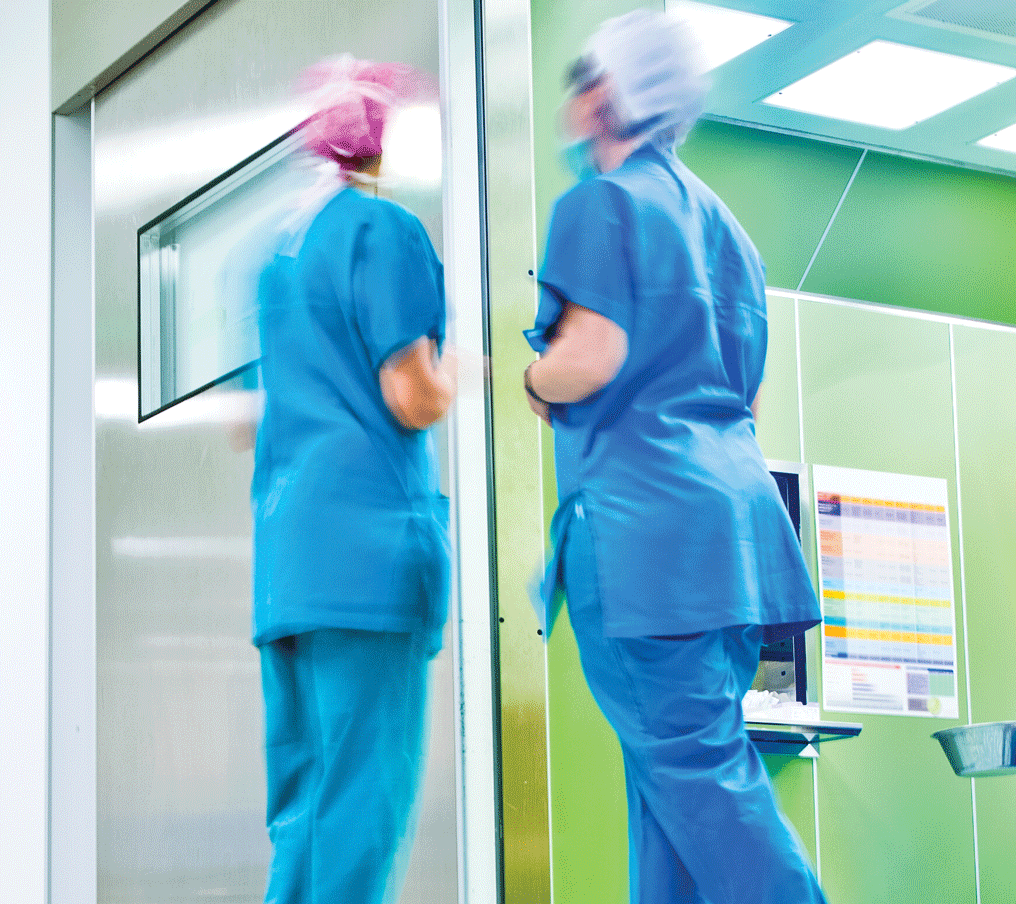Running up a temperature: the risks of warm weather for outdoor enthusiasts
Nicholas Rodriguez, MSII - Kaiser Permanente Bernard J Tyson School of Medicine, EMRA MSC Pacific Regional Representative 2022-2023
Breeanna Messner, MSII - Washington State University Elson S Floyd College of Medicine
EMRA MSC West Coordinator, 2022-2023
Kit Sitterley, OMSIII - Burrell College of Osteopathic Medicine
EMRA MSC Southwest Regional Representative, 2022-2023
With the arrival of Spring and record-high temperatures and humidity gripping many parts of the country, annual emergency department visits for heat stroke and other exertional heat illness have seen a frightening increase in recent years. While the excitement of returning to competition and resuming outdoor activities remains palpable, taking the necessary steps and prevention efforts needs to remain at the forefront of the minds of athletes, outdoor enthusiasts, and others who exert themselves to protect themselves from heat related illnesses. Managing and preventing exertional heat illness and heat stroke is multifactorial. Clinically, it is defined as a core body temperature that rises above 40°C, accompanied by hot, dry skin and central nervous system abnormalities such as delirium, convulsions, or coma1. In addition, heat related illnesses are particularly harmful, because body temperatures over 40°C destroy our tissues and result in multi-organ damage and late developing complications like rhabdomyolysis, acute kidney injury, and acute liver failure2.
Overall, the CDC estimates an average of 702 heat-related deaths, over 67,000 emergency department visits, and over 9,000 hospitalizations every year due to extreme heat in the United States3. Estimates for the incidence of heat-related illnesses in the United States vary based on the populations described. Among U.S. high school athletes, there are approximately 9000 cases annually, and among U.S. Armed Forces personnel there were over 2,500 cases of either heat-related illness or heat stroke in 2017. Among emergency department visits, from 2006-2010 an estimated five per 10,000 visits were due to heat related illness4.
Yet, it is not only extreme heat or physical exertion that leads to heat stroke or heat-related injuries. A myriad of predisposing factors significantly impair thermoregulation. These include lower levels of physical fitness, elderly adults with comorbidities, sleep deprivation, dehydration, and those with little or no access to air conditioning5,6. While management and prevention of heat stroke and heat-related illness is extensive, morbidity and mortality are directly related to the amount of time a patient’s core body temperature is elevated.
Especially among patients presenting with suspected heat stroke, mortality outcomes are correlated to time to initiation of cooling7. Beginning in the field at the time of collapse, cooling should be initiated immediately with ice, tepid water, or other available means to reduce the risk of long term morbidity and mortality8. For cases of exertional heat stroke among athletes, organ damage, morbidity, and mortality significantly increased when cooling is delayed more than 30 minutes9, hence the importance of pre-hospital cooling measures.
When it comes to treating heat-related illnesses, ice-water immersion is the first line therapy for decreasing body temperature quickly and effectively. However, this is not always widely available, so the next best thing to do is to place a fan in front of the individual while spraying water on them, also known as evaporation treatment. An alternative option is to dampen a bed sheet or blanket in cold water and wrap the individual in it10. Treatment is aimed at decreasing the core body temperature rapidly, but correcting electrolyte abnormalities and fluid resuscitation should also be considered when indicated11.
Although there are effective and minimally invasive treatments for heat-related illnesses, prevention is integral to keeping athletes and outdoor enthusiasts healthy. Namely, acclimating to the increasing temperatures by gradually increasing heat exposure and intensity, appropriate hydration prior to exercising in the heat, being active with a group who is aware of the symptoms of heat-related illnesses, and using cooling towels or ice packs to decrease body temperatures12.
In summary, heat related illness is an increasingly prevalent concern presenting to the emergency department. Prevention of heat illness, as well as rapid time to cooling when injury occurs, are crucial to preventing organ damage, morbidity, and mortality.
References:
- Bouchama A, Knochel JP. Heat stroke. N Engl J Med. 2002;346(25):1978–88. doi: 10.1056/NEJMra011089.
- Stearns RL, O'Connor FG, Casa DJ, Kenny GP. Exertional heat stroke. In: Preventing Sudden Death in Sport and Physical Activity, Casa DJ (Ed), Jones & Bartlett Learning, Sudbury 2011. p.53.
- Heat & Health tracker. Centers for Disease Control and Prevention. https://ephtracking.cdc.gov/Applications/heatTracker/
- Gauer R, Meyers BK. Heat-Related Illnesses. Am Fam Physician. 2019 Apr 15;99(8):482-489. PMID: 30990296.
- Casa DJ, Armstrong LE, Kenny GP, O'Connor FG, Huggins RA. Exertional heat stroke: new concepts regarding cause and care. Curr Sports Med Rep. 2012;11(3):115–23. doi: 10.1249/JSR.0b013e31825615cc.
- O'Neill MS, Zanobetti A, Schwartz J. Disparities by race in heat-related mortality in four US cities: the role of air conditioning prevalence. J Urban Health. 2005;82(2):191–7.
- Pease S, Bouadma L, Kermarrec N, Schortgen F, Régnier B, Wolff M. Early organ dysfunction course, cooling time and outcome in classic heatstroke. Intensive Care Med. 2009 Aug;35(8):1454-8. doi: 10.1007/s00134-009-1500-x. Epub 2009 Apr 29. PMID: 19404610.
- Hadad E, Rav-Acha M, Heled Y, Epstein Y, Moran DS. Heat stroke : a review of cooling methods. Sports Med. 2004;34(8):501-11. doi: 10.2165/00007256-200434080-00002. PMID: 15248787.
- Belval LN, Casa DJ, Adams WM, Chiampas GT, Holschen JC, Hosokawa Y, Jardine J, Kane SF, Labotz M, Lemieux RS, McClaine KB, Nye NS, O'Connor FG, Prine B, Raukar NP, Smith MS, Stearns RL. Consensus Statement- Prehospital Care of Exertional Heat Stroke. Prehosp Emerg Care. 2018 May-Jun;22(3):392-397. doi: 10.1080/10903127.2017.1392666. Epub 2018 Jan 16. PMID: 29336710.
- Wasserman DD, Creech JA, Healy M. Cooling Techniques For Hyperthermia. [Updated 2021 Oct 20]. In: StatPearls [Internet]. Treasure Island (FL): StatPearls Publishing; 2022 Jan-. Available from: https://www.ncbi.nlm.nih.gov/books/NBK459311/
- Morris A, Patel G. Heat Stroke. [Updated 2022 Feb 15]. In: StatPearls [Internet]. Treasure Island (FL): StatPearls Publishing; 2022 Jan-. Available from: https://www.ncbi.nlm.nih.gov/books/NBK537135/
- Nichols AW. Heat-related illness in sports and exercise. Curr Rev Musculoskelet Med. 2014;7(4):355-365. doi:10.1007/s12178-014-9240-0
Related Content

Oct 23, 2020
Program Director Interview Series: Matthew T. McCarthy, DO | EM Residency Program Director at St. Vincent Hospital Erie, PA
In this month’s addition to the Program Director Interview Series we got to chat with Dr. Matthew McCarthy to learn about the St. Vincent's Erie Emergency Medicine Residency Program in Northwest Pennsylvania.






